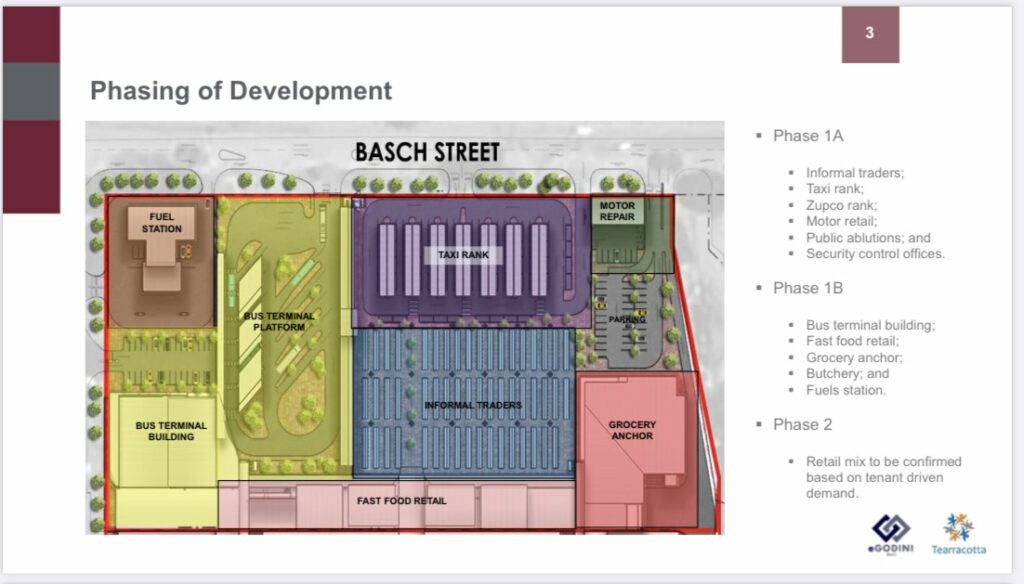A shortage of retail tenants may slow down the completion of phase two of the Egodini Mall project, as the South African property developer Terracotta Trading (Private) Limited says constructing the mall is based on tenant demand.
This means without many retail tenants to fill the shopping mall space, construction will be slowed down.
The rehabilitation of the Egodini Mall Project is divided into phases.
Phase One A would see the creation of stalls for informal traders, taxi ranks, ZUPCO rank, motor retail, public ablutions and security control offices, of which Terracotta expects to complete the taxi rank by mid-April to allow public transporters to start operating from there.
Phase One B is set for a bus terminal building, fast food retail, grocery anchors, butchery and fuel stations.
Phase Two is designed for a retail mix, which will be confirmed based on the tenants who want to fill the shopping space.

But filling those retail vacancies has been hard as Terracotta Director, Thulani Moyo, confirmed tenant demand has been thin on the ground due to the ‘ailing’ economy.
“At the moment, we haven’t looked at Phase two and three. This is not currently supported by the tenant demand because the economy still needs to pick up a little bit more so that the tenants who are meant to go in there – fashion, cosmetic, those type of tenants – (are few),” he said while responding to questions from the media on Friday during a tour of the Egodini Project.
Moyo said some of the tenants who had expressed interest had dropped out so the company could not go ahead with Phase two unless more retail tenants came forward.
“Previously we had allocated space for Edgars, Jet, PEP, Power Sales and so forth but we understand that PEP then withdrew from Zimbabwe. We will wait and see what Power Sales are going to do in terms of that. Then we got to a position where Edgars as well was saying perhaps only a Jet store could work here,” said the director.
“Our developments are tenant driven and we respond to tenant demand, tenant requirements and tenants who know their business. It’s the tenants who know what will work for them. At the moment, for phase two and three we are not yet there. We are just focusing on Phase 1A and Phase 1B.”
He noted the cost of developing Phase 1A and 1B “could be somewhere around $20 million” while the total budget for 1A was $6million.”
“We have a big advantage (when it comes to pricing) especially here in Bulawayo. We have actually seen that a lot of construction is linked to pricing in South Africa because its linked to South African prices, the depreciation of the South Africa Rand versus the dollar has actually helped our construction,” Moyo said.
“Construction inflation has not really gone up, the inflation might be releasing as well. That has been a very big advantage of the Rand depreciating against the US Dollar so that works in our favour in terms of this project because it brings the South African Rand price down in US$ terms.”
Terracotta has also hired about 130 people since it started rehabilitating Egodini.
“ I need to check the latest statistics, when we last measured in September last year during the initial stage of enabling work, we had about 90 people and on this stage when we added another 40 people. These workers work in stages and are brought in to work on a particular issue, so for example if we are laying water pipes plumbers come in and if they are done they go and others come in,” Moyo summed.
The Bulawayo City Council awarded Terracotta a tender to redevelop the Basch Street bus terminus popularly known as Egodini under a Build Operate and Transfer (BOT) facility.
However, since then the multimillion-dollar project failed to take off in time prompting residents and councillors to demand that the deal be terminated.

